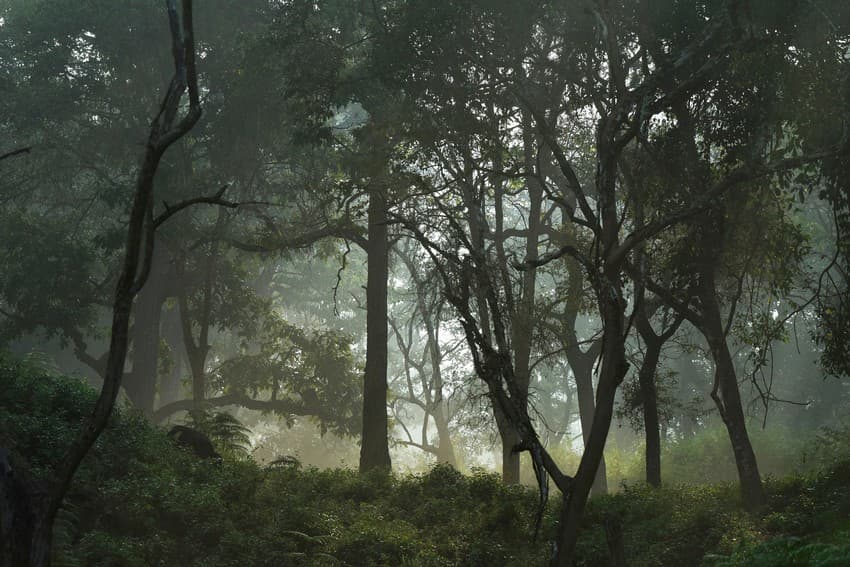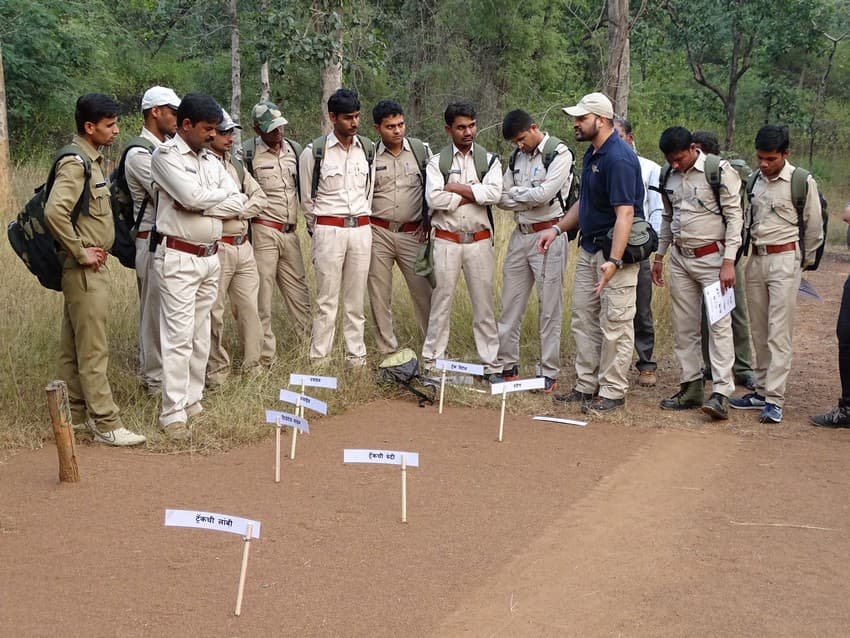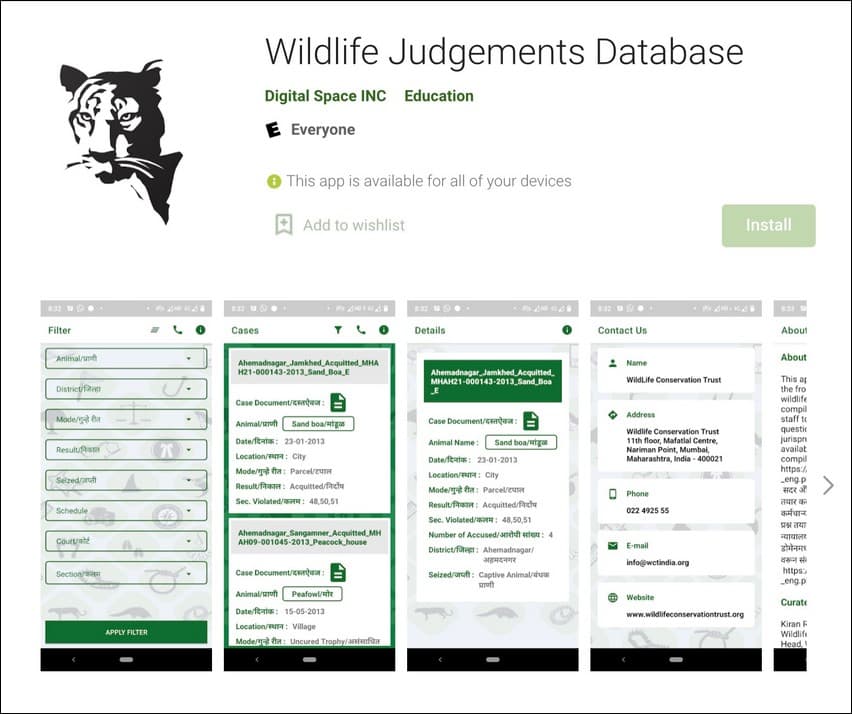The fight against wildlife crime is an uphill battle all the way. Law enforcement authorities are often left breathless trying to cope with the growing scale and ever-changing modus operandi of wildlife criminals, whose destructive handiwork has led wildlife crime to swell up into one of the most profitable organised crimes in the world, after only trafficking of arms, drugs, and humans. The knockdown effects of hunting, trading, and over exploitation of species to meet the burgeoning demands from across the world are as devastating for wildlife populations and ecosystems as they are for rural livelihoods and economies.

Photo credit: Dr. Anish Andheria
While in theory, India’s wildlife protection legislation boasts of some of the most robust and stringent wildlife protection laws and provisions – Wild Life (Protection) Act, 1972 ; Forest Conservation Act, 1980; The Environment (Protection) Act, 1986; Biological Diversity Act, 2002 – in practice, the subpar state of wildlife crime investigations and convictions lies in stark contrast to it. In India, less than five percent of the wildlife cases end in rightful conviction of criminals. Among these, the cases that do see wildlife offenders get convicted often translate into a disproportionately light quantum of judicial punishment. This sets a precedent of undermining the seriousness of wildlife crimes, and fails to deter poachers and traders.
The Anatomy Of Wildlife Crime Investigation
The legal journey of a case involving wildlife crime, right up to the passing of the judgement, entails initiating investigation, proper handling and processing of evidence and the crime scene, levying appropriate charges against the accused, gathering robust intelligence, establishing strong witnesses, etc. by the law enforcement authorities, such as the state Forest Departments which are central to any wildlife crime investigation. The quality of investigation, evidence, and case will ultimately determine the sentence that a judge prescribes. Weaker the investigation, weaker will be the case, and thereby weaker will be the judgment passed. Getting off easy further instils confidence and motivation among the perpetrators to commit more crimes against wildlife, in turn overburdening the already understaffed and overworked forest workforce, ultimately affecting their ability to perform investigations. This is a vicious feedback loop that has been set in motion by an apathetic system which is doing little to build the capacity of the foresters who are deprived of funding, training, and support.
The Wildlife Conservation Trust (WCT) is systematically working towards addressing major gaps that exist within India’s forest protection mechanism. One such glaring lacuna is the lack of training and capacity building of the forest staff with respect to law enforcement, wildlife crime investigation, and jurisprudence.
“WCT has engaged in law enforcement training for nearly a decade now, and we have trained over 14,000 frontline forest staff across nine states in India,” says Kiran Rahalkar who heads WCT’s Wildlife Law Enforcement Training (WLET) Programme.
WCT established the WLET programme with the focused aim of creating better capacity for on-field enforcement responses to wildlife crime. “The programme has been designed to impart effective understanding and skills among the forest staff to be able to implement wildlife law, wildlife forensics and crime scene management practices,” Rahalkar adds

Kiran Rahalkar (in blue) conducting a site security training module for the frontline forest staff in Pench Tiger Reserve, Madhya Pradesh, as part of WCT’s WLET programme. Photo credit: WCT
Analysing past court judgements is a crucial step in criminal case proceedings. Studying them helps investigation officers to construct their own case, replicate the rights, avoid loopholes, backtrack, and connect the dots. While wildlife case judgments are made available on the public domain online, Rahalkar realised the absurdity of how difficult it was to access most wildlife cases, and how ambiguously catalogued the databases were. It is essentially “a black box” of judgments, according to Rahalkar. He saw how this hampered the efforts of the forest staff and affected the quality of wildlife investigations in more ways than one.
“It is critical to develop understanding about the crucial lapses that make the cases weak. And for this, a much smoother access to court judgements on wildlife cases is necessary,” says Rahalkar.
An Idea Is Born
When the COVID-19 pandemic brought most activities to a grinding halt, WCT decided to make the most of the imposed lockdown and encouraged its staff to put their lockdown state to good use. Forced to press pause on fieldwork temporarily, Rahalkar set out on a tedious task of combing through the online database of court judgements from Maharashtra’s district courts ranging from year 1992 to 2015. In the process he distilled 529 wildlife judgments. After having poured through all 529 of them and meticulously cataloging them based on district, court, species in question, level of legal protection accorded to the species, nature of crime, charge/s, legal section, and the nature of the final judgment passed (conviction or acquittal), Rahalkar teamed up with Pooja Dewoolkar, Economist with WCT, to dissect and analyse each case. The analysis will help understand if there are any underlying procedural differences between wildlife cases that have ended in conviction and those that ended in acquittal.
Of the 529 wildlife cases, only 19 percent had concluded with criminals being legally convicted of the crimes. In thirty-nine percent of the cases, witnesses had turned hostile due to various reasons. This is reflective of the larger, dismal state and treatment of wildlife cases. With limited resources and capacity for investigation among the forest staff, and limited understanding of wildlife law not only among the forest staff, but also lawyers and judges, most wildlife cases seem to be doomed from the start.
“While each judgement has a unique insight to offer on how the Wild Life Protection Act has been implemented, when they are seen together, a few patterns emerge. For example, the section on hunting has been applied in the majority of cases (68% of the 529 curated wildlife judgments) which demands that there should be allied evidence present for the case to hold up. In the absence of relevant evidence, the likelihood of acquittal of the accused increases,” explains Dewoolkar. It is important that the investigating forest staff invoke the right legal sections as per the nature of each individual case and available evidence, as otherwise it would weaken the construction of cases.
The goal is to make the curated repository of wildlife judgments easily accessible to the forest staff, at the ready, aiding in building strong cases. The ubiquitousness of smartphone in this day and age, made turning this repository into a mobile application the most logical solution. And thus, WCT’s ‘Wildlife Judgments Database’ application materialised and has been designed keeping the needs of the forest workforce in mind.
“The prime focus of this application is to make accurate information available to the forest staff at their fingertips, and empower them to process the cases in an efficient manner, thus saving them precious time and effort,” says Rahalkar.
The Wildlife Judgments Database app has now been made available on Google Play Store. WCT is working to ensure that the knowledge of this app is made available to all the forest staff in Maharashtra, in all the districts, by working closely with the Forest Department.
But, this application is by no means the last stop in the journey of the project. If anything, it is a start of an ambitious India-wide effort to build the application resource of wildlife case judgments encompassing all states, and make it accessible in most regional languages. Presently, the application can be perused in English and Marathi. The application is dynamic in nature and will be constantly updated with newer cases and features to make it thoroughly exhaustive. Furthermore, its availability on a widely-used forum such as the Google Play store is intended to benefit not just the forest staff, but also, researchers, students, government officials and the general public who are free to access the app.

WCT’s ‘Wildlife Judgements Database’ app is available on Google Play Store.
“The app has been conceptualised to improve the access to important Judgements for the frontline forest staff so that we can target the low conviction rates in the case of crimes against forests and wildlife. Despite a powerful Act and judicial system in the country, forests and wildlife are being abused on many counts. This is largely due to the ease with which hardened criminals are able to acquire bail. Hope this collaborative effort between the Maharashtra Forest Department and WCT proves to be a big step in tilting the balance in the favour of the wildlife of the state,” says Dr. Anish Andheria, President, WCT.
——————————————————————————————————————————————————————
About the author: Purva Variyar is a conservationist, science communicator and conservation writer. She works with the Wildlife Conservation Trust and has previously worked with Sanctuary Nature Foundation and The Gerry Martin Project.
Disclaimer: The author is associated with Wildlife Conservation Trust. The views and opinions expressed in the article are her own and do not necessarily reflect the views and opinions of Wildlife Conservation Trust.
——————————————————————————————————————————————————————
Your donations support our on-ground operations, helping us meet our conservation goals.
——————————————————————————————————————————————————————
Related Links
- Private: Forensics Vs. Wildlife Crime: On A War Footing
- Can Artificial Intelligence Predict Human-Wildlife Conflict?
- Wildlife Crime: Prosecution Hurdles
- Roads To Nowhere – Roadkills – A Citizen Science Initiative
- Tightening The Noose On Wildlife Crime
- International Tiger Day 2019

